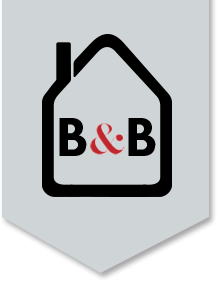Tiny House Trailers
Everything you need to know about tiny house trailers
Everything you need to know about tiny house trailers
What is Zoning? Learn everything you will need to know!
If you live in New Hampshire, please email the chair of the Tiny House Study Committee, State Rep Dave Testerman at [email protected] to express your support for the adoption of Appendix Q for tiny houses on foundations.
The public comment period for Connecticut residents is not open yet. When it opens up, this post will be updated with the contact info.
The following information on Appendix Q is adapted from our previous blog post, written when Massachusetts adopted the Tiny House Appendix.
Appendix Q: Tiny Houses provides building safety standards for houses on foundations that are 400 sq. ft. and under. The other building codes in existence for all other size dwellings still apply. Appendix Q is was created to define safety standards for smaller spaces that wouldn’t necessarily fit into a tiny house, such as a full-size staircase.
The Appendix pertains to the following aspects of designing a small or tiny house:
Read the entire text of Appendix Q: Tiny Houses here.
Not quite! Every zone of every municipality in the state still has its own zoning bylaws. Therefore, you’ll need to contact your municipality to see if they’ll allow your tiny-house-on-a-foundation project. Here’s how.
Here’s what the Tiny House Appendix does mean for residents of states that have adopted Appendix Q: wherever a house that’s 400 sq. ft. or under is allowed, there are now rules in place for how to build it safely and effectively. Before, small and tiny houses on foundations would have had to adhere to certain building codes that work well for large buildings but would have been impractical or impossible to follow in small spaces.
Building code provides a set of safety standards that new buildings must adhere to by law. These standards ensure the safety of the people using the building. There are separate building codes for residential buildings (like houses and apartment buildings) and all other buildings (like shops, factories, schools, and workplaces). The Tiny House Appendix is set to become part of the state building code in NH and CT, which is based on the International Residential Code (IRC). Most, but not all, states in the USA use the IRC as the basis for their state-wide building codes, and adapt each section as necessary.
Zoning code pertains to what types of buildings municipalities (cities and towns) allow, and where. Often a city or town has several different zones, and each zone has different rules. Zoning bylaws are decided by the zoning board of a city or town, and can be amended to better fit the needs of each city or town. Zoning boards generally have regular meetings that are open to the public, where the public can share their concerns, get clarification on what is allowed to be built, and request a change to the zoning bylaws to improve their municipality.
How can the Tiny House Appendix influence local zoning officials? Appendix Q as part of a state’s building code serves to legitimize tiny and small dwelling spaces in the eyes of local building inspectors and zoning boards. Municipalities that see there are ICC-approved codes to build tiny and small houses may be more inclined to adopt those types of homes into their zoning.


Left: Appendix Q applies to tiny houses on foundations that are 400 sq. ft. or under.
Right: Appendix Q does not apply to tiny houses on wheels.
Currently, the Tiny House Appendix, or Appendix Q, only regulates houses that are permanently-affixed. It does not relate to tiny houses on wheels. However, there is a movement to create a new version of Appendix Q for tiny houses on wheels as well. Martin Hammer, Andrew Morrison, and Gabriella Morrison were instrumental in introducing Appendix Q to the International Building Code and then again to individual states. See their website for more info on future plans for a tiny house on wheels appendix.
B&B Micro Manufacturing would like to give a shout-out to the Tiny Home Industry Association for its tireless research on tiny house laws across the nation and the American Tiny House Association for its influence on state policy!
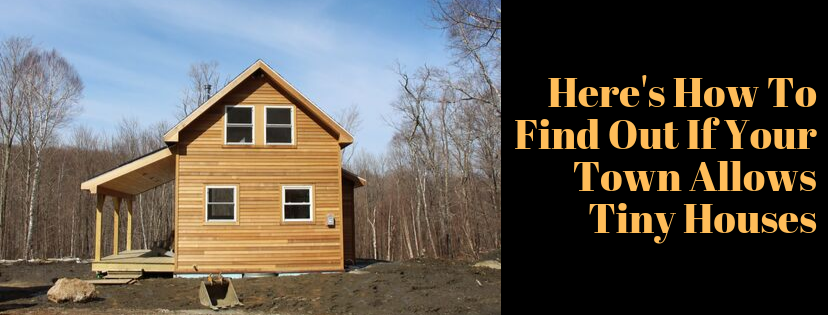
Zoning codes for many municipalities can be found on your town’s website or on ecode360.com.
Here are some helpful search terms:
If you’re hoping to put a tiny house ON WHEELS either on its own property or on a property with other buildings:
If you’re hoping to build a backyard cottage ON A FOUNDATION:
If you’re hoping to build a small house ON A FOUNDATION on its own piece of land:
Appendix Q for tiny houses on foundations:
If you’re hoping for a tiny or small house ON A FOUNDATION, look into whether your state has adopted Appendix Q for tiny houses into its building code. Appendix Q is a set of safety standards for houses on foundations that are 400 sq. ft. and under, basically providing standards for how lofts and ladders are built. More info on Appendix Q for Tiny Houses here. If your state hasn’t adopted Appendix Q, that doesn’t necessarily mean you can’t build small: it just means you’ll have to follow your state’s existing building code for lofts and ladders, and the other details in the Tiny House Appendix.
On January 1, 2020, Massachusetts and California simultaneously will join Maine, Idaho, Oregon and Georgia as the first six states to adopt the Tiny House Appendix into their building code. Many other states are in the process of adopting the Tiny House Appendix. The Tiny Home Industry Association has updates on Appendix Q across the United States.
Please note: there may be more lenient rules depending on whether your tiny house will be used seasonally, as a “guest house”, “camper”, or “cabin” rather than as a full-time, permanent residence. If you’ll only be using your tiny house sometimes, residential zoning laws and building codes may not apply. Check in with your municipality if this is the case.

Photo: Arcadia Tiny House on Wheels. This tiny house can travel, and it’s certified as an RV. It’s currently being used as a guest house at Woodlife Ranch; it isn’t someone’s permanent home.
If you can’t find any info on tiny houses in the town’s zoning but would like to know whether a tiny house on wheels or on a foundation would be legal to live in full-time, send a quick email to your town’s building inspector or zoning board (you can find their contact info on your town’s website).
Be sure to include the following information:
They’ll be able to tell you whether tiny houses are legal.
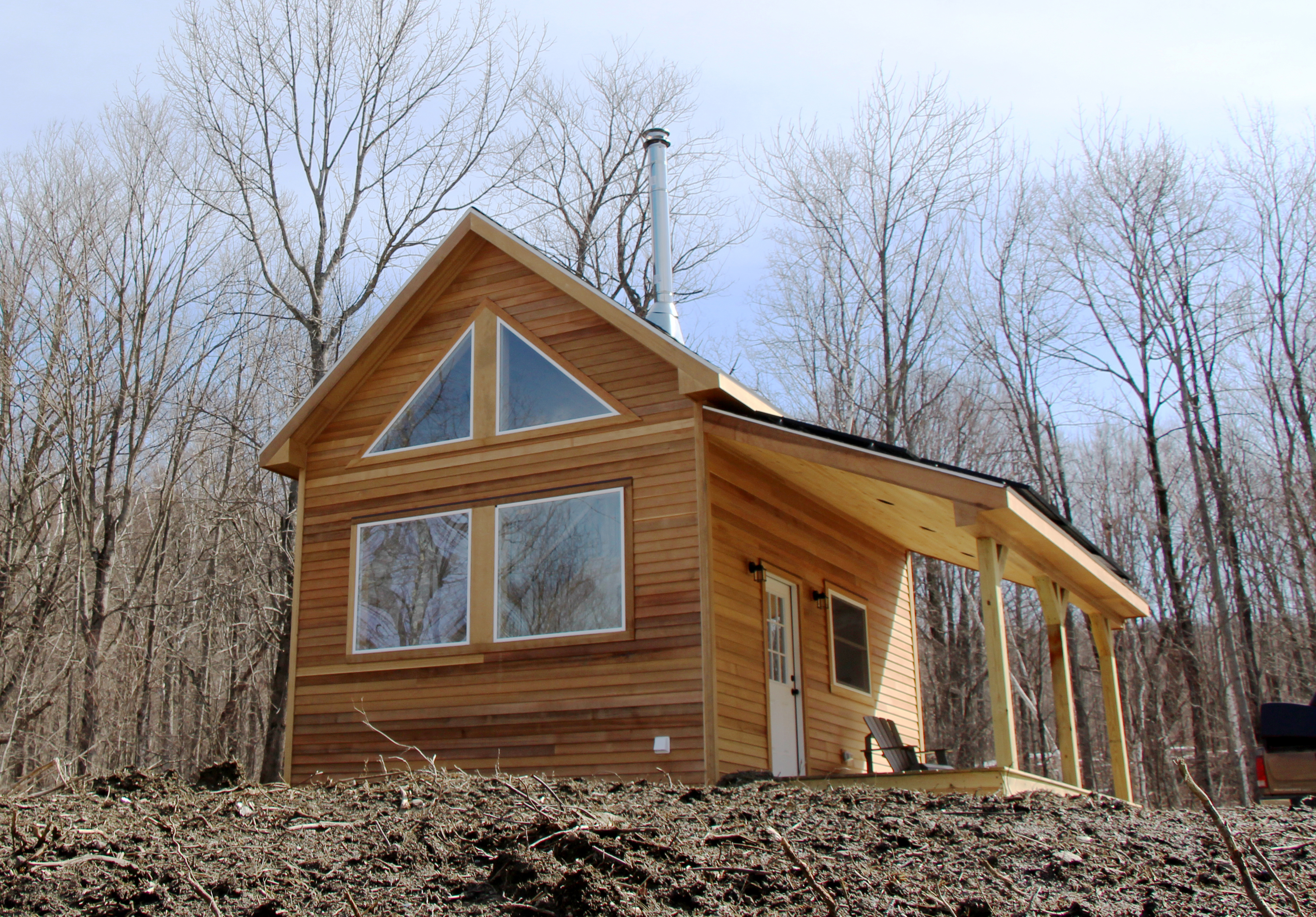
Photo: Green River Small House. This house was built on-site, piece by piece, and it is compliant with local zoning bylaws and state building code. It’s being used as a permanent, year-round home.
If tiny houses are not currently included in the zoning bylaws, your zoning board will be able to advise you whether it’s worth pursuing a change to the zoning bylaws. Generally this process takes a while, and the zoning board will guide you through it. You don’t have to be an expert to request a zoning change, just an interested citizen! Be prepared with knowledge of how having tiny houses would help your town or city. Here are some examples, which you can tailor to the specific needs of your municipality:
It’s best to do this before you have your tiny house built. This way, you can be flexible in your design, making sure it conforms with the standards the town creates.

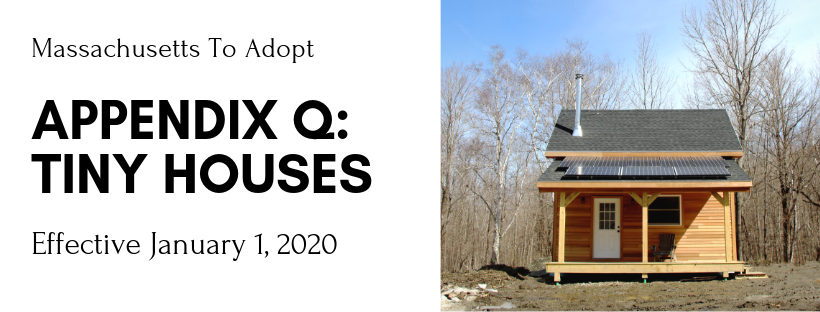
From a letter by John Nunnari, Executive Director of the Massachusetts Chapter of the American Institute of Architects:
“The BBRS… voted to bundle a package of previous approved amendments intended for incorporation into the current 9th edition of the state building code.
It is anticipated that these amendments will become effective on January 1, 2020, and they include, but are not limited to, the following:
- Adoption of 2018 IECC with MA amendments – including updates to the stretch energy code, new lighting power density requirements and incorporation of new EV- charging requirements for commercial project;
- Revisions to Chapter 110.R3 manufactured building program;
- Adoption of ICC’s 2018 base residential code Appendix Q pertaining to Tiny Houses;
- New language outlining code requirements for the creation of micro-housing dwelling units within apartment and condominium buildings
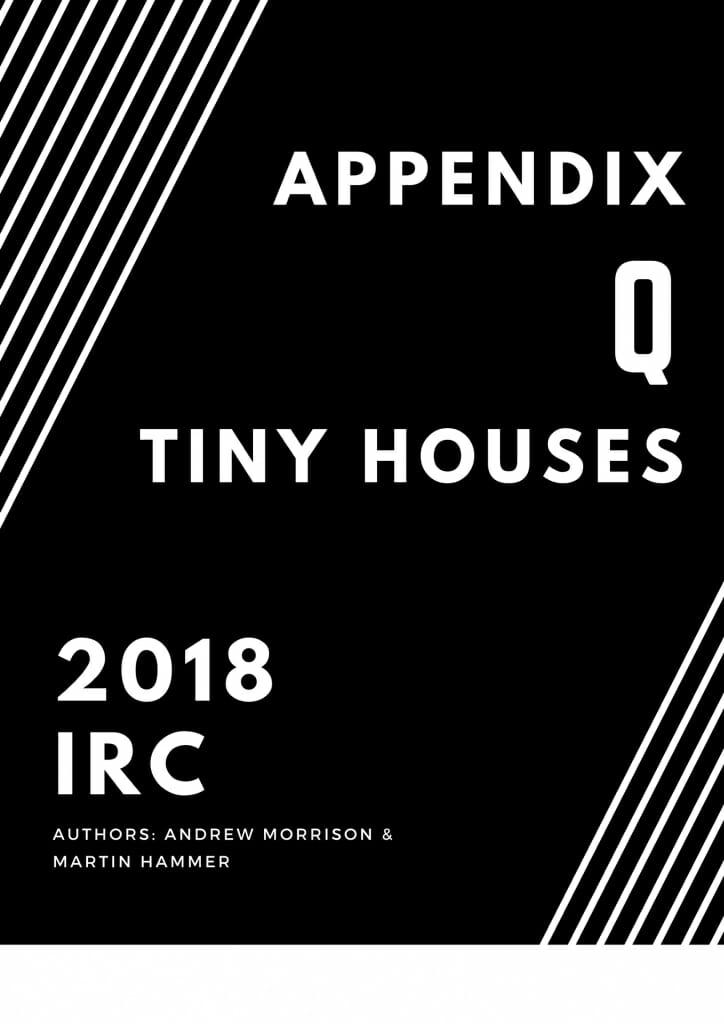 What is Appendix Q: Tiny Houses?
What is Appendix Q: Tiny Houses?Appendix Q: Tiny Houses provides building safety standards for houses on foundations that are 400 sq. ft. and under. The Appendix pertains to the following aspects of designing a small or tiny house:
Read the entire text of Appendix Q: Tiny Houses here.
It’s been a long road in Massachusetts, full of starts, stops and quite a few government delays. But the hardest part is over and now other states should find it easier to adopt the Tiny House Appendix. On January 1, 2020, Massachusetts and California simultaneously will join Maine, Idaho, Oregon and Georgia as the first six states to adopt the Tiny House Appendix into their building code.
Update 8/21/09: Virginia will also be adding the appendix to their 2021 code.
Here’s how it happened:
August 2016: Andrew Morrison submitted a proposed tiny house appendix to the International Code Council (ICC).
January 31, 2016: The Tiny House Appendix was officially adopted into the International Residential Code (IRC) by the ICC. Now, it is up to each state to decide to adopt it into their own building code.
September 2017: Gabriella Morrison and Andrew Morrison traveled to Boston to present The Tiny House Appendix, then known as Appendix V, to the Massachusetts Board of Building Regulations and Standards. Jason at B&B Tiny Houses also testified to the BBRS. Letters of support came from the American Tiny House Association and many, many tiny house enthusiasts in Massachusetts.
May 14, 2018: Tiny House Appendix Q Is Being Considered For Massachusetts’ State Building Code: Here’s How You Can Help Massachusetts Board of Building Regulations and Standards (BBRS), at its regular monthly meeting, addressed Proposal Number 5-2-2018: “Consider adopting Appendix Q of the International Residential Code pertaining to Tiny Houses.”
July 12, 2018: Massachusetts BBRS Approves Tiny House Appendix: Here’s What’s Next After the BBRS approved the Appendix, it had to move through many state offices and be approved by each one.
September 5, 2018: Appendix Q “Tiny House Appendix” Advances in Massachusetts, August 2018. The Appendix was still moving though state offices, which was a good sign. However, by the winter of 2018 we hadn’t seen any forward movement in Massachusetts and we couldn’t get an answer from the BBRS about whether the Appendix would be propagated. In addition, there was a 35 day long government shutdown which we suspected may have hindered the progress of the Appendix.
January 22, 2019: Katie at B&B Tiny Houses worked with Massachusetts Senator Adam Hinds, Danielle Allard, Esq., the director of Budget & Policy for Sen. Hinds’ office, and the Massachusetts Smart Growth Alliance to find a solution. Together, we filed SD.1636, An Act relative to Tiny Homes to encourage the state of Massachusetts to adopt Appendix Q: Tiny Houses. Read the bill here.
June 11, 2019: The Massachusetts BBRS and Governor Baker’s administration vote to officially adopt the Tiny House Appendix into the Massachusetts Building Code.
January 1, 2020: Appendix Q will be in effect in Massachusetts.
Not quite! Every zone of every municipality in the state still has its own zoning bylaws. Therefore, you’ll need to contact your municipality to see if they’ll allow your tiny-house-on-a-foundation project. Here’s how.
We’re compiling a list of every municipality in Massachusetts’ attitude toward tiny houses on wheels and on foundations. It’ll always be a work in progress as we research more municipalities and as zoning rules change over time. If you have info to add to the list, please let us know!
Here’s what the Tiny House Appendix does mean for Massachusetts residents: wherever a house that’s 400 sq. ft. or under is allowed, there are now rules in place for how to build it safely and effectively. Before, small and tiny houses on foundations would have had to adhere to certain building codes that work well for large buildings but would have been impractical or impossible to follow in small spaces.
Building code provides a set of safety standards that new buildings must adhere to by law. These standards ensure the safety of the people using the building. There are separate building codes for residential buildings (like houses and apartment buildings) and all other buildings (like shops, factories, schools, and workplaces). The Tiny House Appendix is set to become part of the Massachusetts state building code, which is based on the International Residential Code.
Zoning code pertains to what types of buildings municipalities (cities and towns) allow, and where. Often a city or town has several different zones, and each zone has different rules. Zoning bylaws are decided by the zoning board of a city or town, and can be amended to better fit the needs of each city or town. Zoning boards generally have regular meetings that are open to the public, where the public can share their concerns, get clarification on what is allowed to be built, and request a change to the zoning bylaws to improve their municipality.
Appendix Q is part of the Massachusetts building code, and serves to legitimize tiny and small dwelling spaces in the eyes of local building inspectors and zoning boards. Municipalities that see there are ICC-approved codes to build tiny and small houses may be more inclined to adopt those types of homes into their zoning.


Left: Appendix Q applies to tiny houses on foundations that are 400 sq. ft. or under.
Right: Appendix Q does not apply to tiny houses on wheels.
Currently, the Tiny House Appendix, or Appendix Q, only regulates houses that are permanently-affixed. It does not relate to tiny houses on wheels. However, there is a movement to create a new version of Appendix Q for tiny houses on wheels as well. Martin Hammer, Andrew Morrison, and Gabriella Morrison were instrumental in introducing Appendix Q to the International Building Code and then again to individual states including Massachusetts. See their website for more info on future plans for a tiny house on wheels appendix.

Before having your tiny house built, you should already have a spot to put it lined up. You don’t want to end up with a tiny house and nowhere to put it!
Because tiny houses are a relatively new phenomenon, most municipalities have never had anyone approach them to ask whether they can live in a tiny house. Therefore, most municipalities don’t have any bylaws saying you can or can’t live specifically in a tiny house. Use this guide to learn what you’ll need to know to get the perfect parking spot for your tiny house.
The 8 Steps To Buying A Tiny House: Everything You’ll Need To Do To Go Tiny
This post covers your entire tiny house buying process, and the first and most important step is finding a place to put it. Whether you’ll be buying or renting land, familiarize yourself with the tiny house buying process and how long it’ll take, before starting to your land search.
Here, you’ll learn how to find and read your town or city’s zoning laws to find out whether there are already rules for tiny houses, whether on foundations or on wheels. If your town doesn’t have laws pertaining to tiny houses, you’ll learn how to approach your town to ask. Importantly, you’ll also learn what to look for in the land, including hookups for fresh water, waste water, and power.
Where Can I Put My Tiny House? A Near-Comprehensive List Of Tiny House Parking Resources
Now that you know how to look for zoning laws and get permission to live in your tiny house, you’ll need to do some networking to find a spot for it! Facebook and Meetup are both great networking sites for tiny house enthusiasts, and this list links to Facebook and Meetup groups about tiny houses in almost every state. In addition to networking on tiny house specific sites and groups, advertise on local forums on Facebook, Craigslist, and community bulletin boards asking for those willing to rent out or sell land for a tiny house. The sooner you find land the sooner you can get started with the build. Good luck, and let us know how your land search goes!
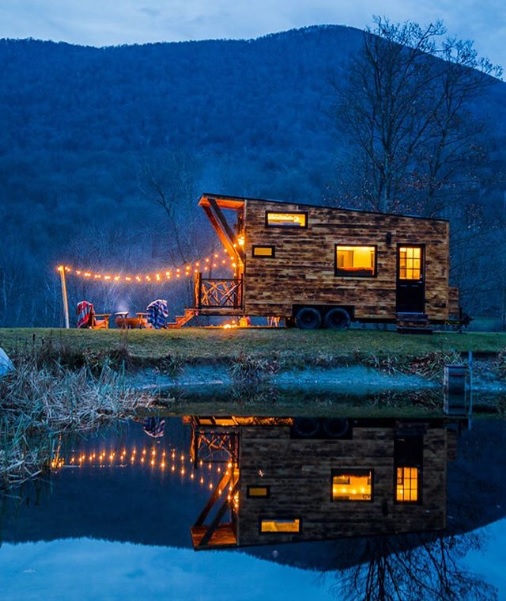
Arcadia Tiny House at Woodlife Ranch. Photo by Kyle Finn Dempsey
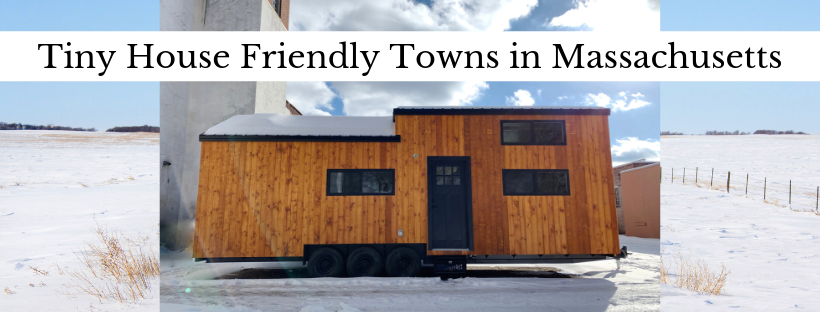
With your help, we’re compiling a list of every city and town in Massachusetts and its attitude toward tiny houses on wheels and on foundations. This is part of a larger initiative by the American Tiny House Association to gather tiny house information for every state in the US. (Katie at B&B Tiny Houses is also ATHA’s northeast regional director.)
As you’ll see in the chart, most cities and towns don’t already have a policy on tiny houses, whether on foundations or on wheels, so their stance on tiny houses is currently unknown. Municipalities probably won’t consider whether to allow tiny houses unless someone brings it up with them! As we’ve seen in Nantucket and Auburn, all it takes is one person to ask.
Tiny House Appendix Q has been adopted in Massachusetts, effective January 1, 2020. Appendix Q: Tiny Houses provides building safety standards for houses on foundations that are 400 sq. ft. and under. However, the appendix doesn’t mean you can build a tiny house on a foundation wherever you want in Massachusetts: you’ll still have to adhere to your municipality’s zoning code. Here’s more info on the Tiny House Appendix.
If you have spoken with your municipality’s government (zoning board, building inspector, or someone else) about tiny houses on wheels or on foundations, we would love to add your info to the list. There’s even a column for rumors, if you’ve heard a town might be amenable to tiny house living but haven’t spoken with them directly yourself.
Zoning codes for many municipalities can be found on your town’s website or on ecode360.com.
If you haven’t spoken with anyone in your city or town government yet but would like to know whether a tiny house on wheels or on a foundation would be legal, send a quick email to your town’s zoning board (you can find their contact info on your town’s website).
Be sure to include the following information:
Someone on the zoning board be able to tell you right away whether tiny houses are already approved. If tiny houses are not currently mentioned in the zoning bylaws, they’ll be able to advise you whether it’s worth pursuing a change.
If you have info on a specific municipality, please email [email protected] and we’ll get your info added to the list.

Auburn’s Town Meeting Warrant can be read here. The tiny house articles are #33 and #34; you’ll read more about the distinction between the two articles in the interview. The approval process isn’t over yet: next, it’ll be sent to the Massachusetts Attorney General Maura Healey (who visited the B&B Tiny Houses workshop last year) to be signed into law for the town of Auburn.
We are so grateful to Dominique for pitching the idea of tiny houses to her town, and in doing so, paving the way for others to do the same in their own municipalities.
First, what’s the background story? What originally led you to ask your town for permission to put a tiny house in your yard?
Did you originally intend to get permission solely for tiny houses meant for caregiving, or was that restriction suggested by the planning board or another entity?
What was the process? How long has this process taken so far? What are the next steps for Article 33 to come to fruition?
I understand you and your husband are builders and plan to build your own tiny house. Did the town of Auburn ask you to build it (or prove that it has been built) to a particular set of standards or code?
Before now, have you ever been involved in a political or government process? Did you reach out to others for help or guidance along the way? Are there any other Auburn residents you know of who are interested in having their own tiny houses?
What advice would you have for others looking to ask for permission to have a tiny house in their own municipality?
Finally, do you have images you’d like to share?
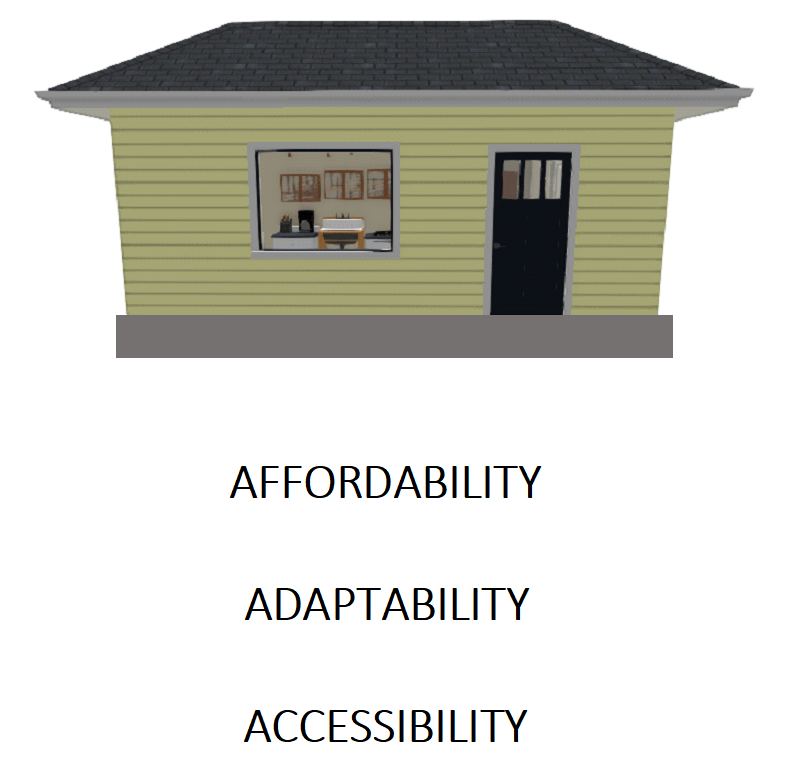
Dominique’s Self-Designed Tiny House For Her Grandmother

Rendering: Dominique’s Self-Designed Tiny House Next To Her Home
The tiny house amendment has gone through all the previous stages of approval: registered voters in Great Barrington will vote on whether to allow them at the annual town meeting on May 6.

Katie Jackson of B&B Tiny Houses was asked to do a presentation at a planning board meeting on what tiny houses are, how they work, and how other cities have written them into their zoning code. Katie is also the Northeast Regional Director of the American Tiny House Association, which is hosting the open house on May 5.
Here’s our previous update on Great Barrington’s consideration of allowing tiny houses on wheels.
Here’s an article on Great Barrington’s Town Meeting from the Berkshire Edge.
Backyard tiny houses will add density without having to change the infrastructure of the town; it’s the quickest, easiest solution (and one of many) that will address the housing crisis.
Here’s Great Barrington’s proposed zoning language pertaining to tiny houses:
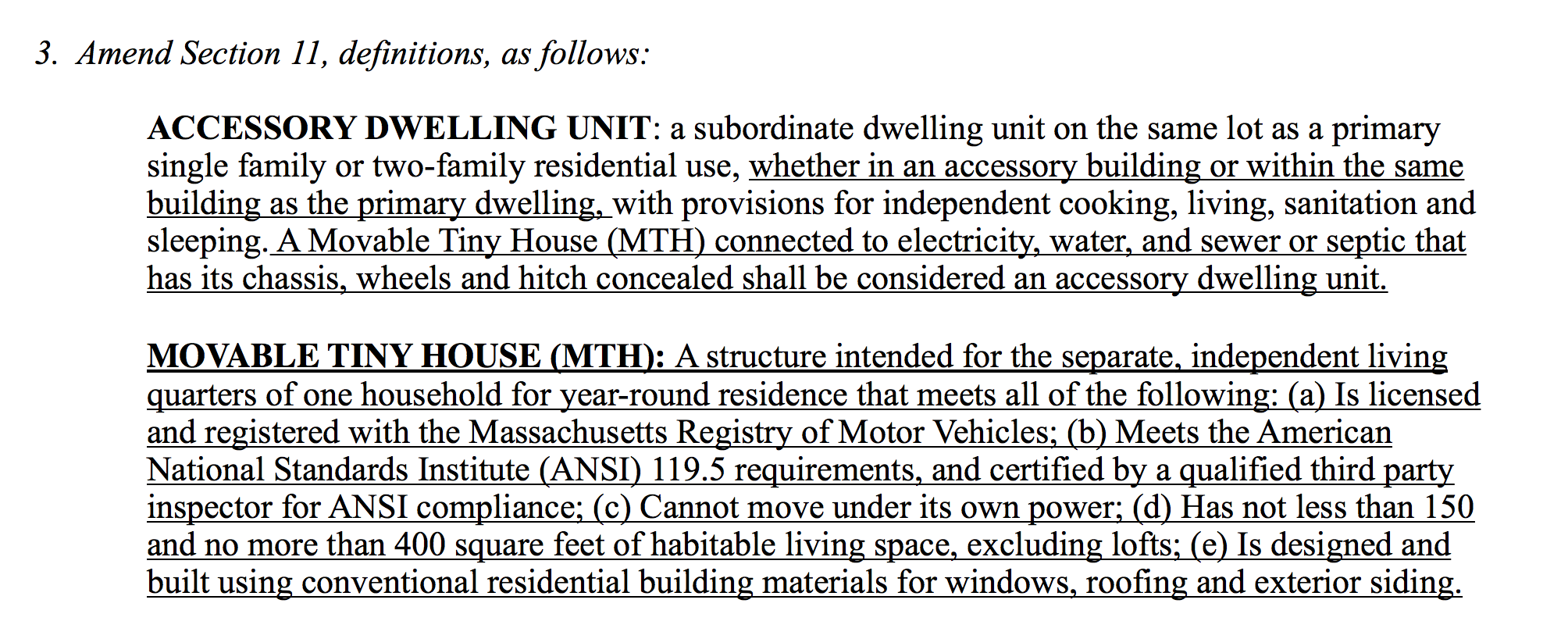
Acronym Key:
MTH: Movable Tiny House
THOW: Tiny House on Wheels
ADU: Accessory Dwelling Unit
-Tiny House Open House in the backyard of 65 Anderson Street, Great Barrington, MA 01230. Sunday, May 5, 10am-4pm.
Sunday’s tiny house open house is in advance of Monday’s Great Barrington Annual Meeting, where a proposed zoning amendment allowing Movable Tiny Houses as accessory dwelling units will be voted upon, among other topics. The open house is hosted by Amy Turnbull who is on the leadership team of the American Tiny House Association, with a movable tiny house built by Tony Indino of East Granby, Connecticut (this house is shown in the event flyer). This open house will give a glimpse into what backyard tiny houses might look like in Great Barrington if the Movable Tiny House Amendment passes.
-Great Barrington Annual Meeting & Vote at Monument Mountain High School Auditorium, 600 Stockbridge Rd, Great Barrington, MA 01230. Monday, May 6, 6:00pm.
Please attend the Annual Meeting on Monday in support of allowing movable tiny houses in Great Barrington backyards. The proposed amendment language is posted in the comments. All those who are registered to vote in Great Barrington may vote on the amendments.
Learn more about our process or fill out the form below and one of our tiny house experts will reach out to you.
